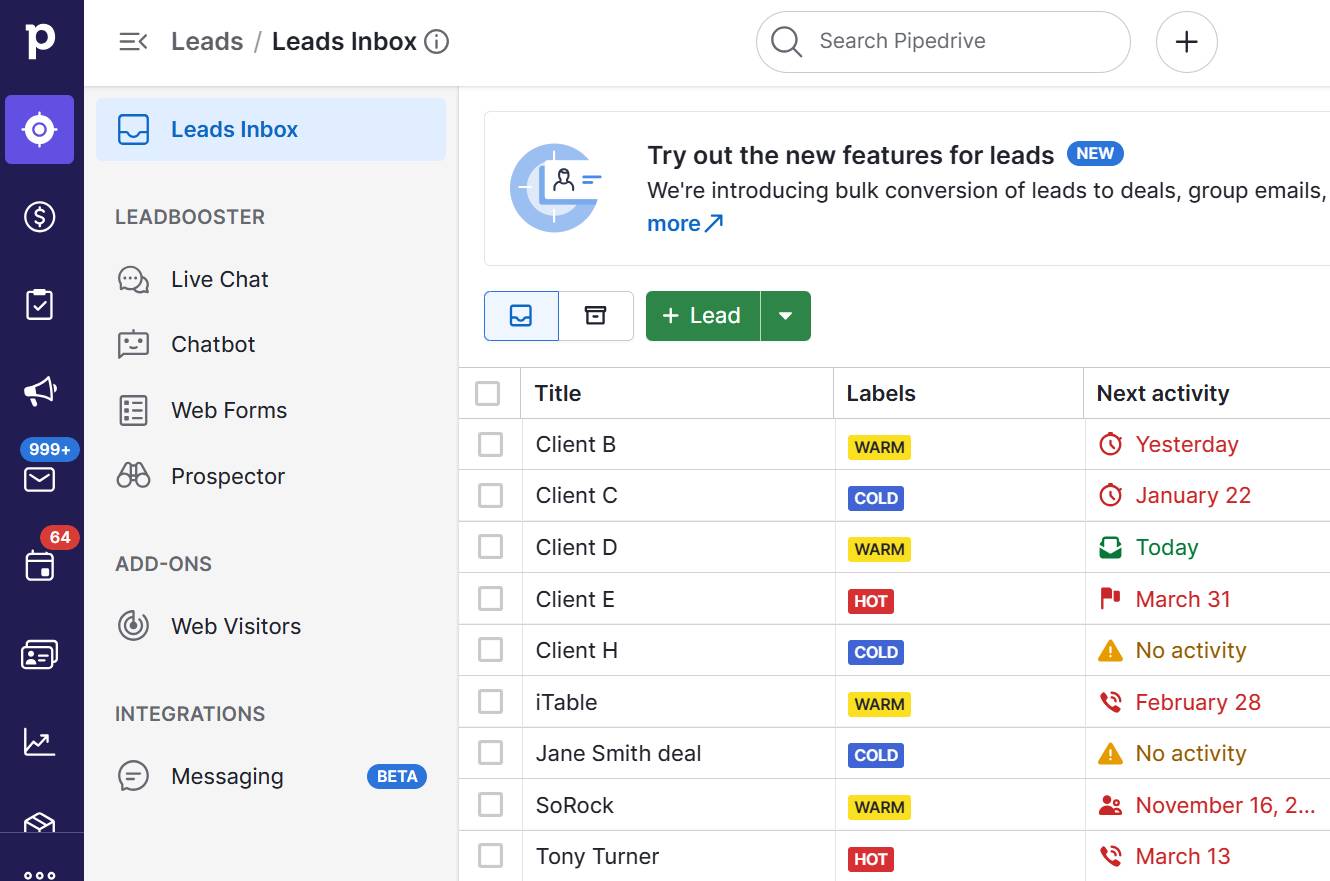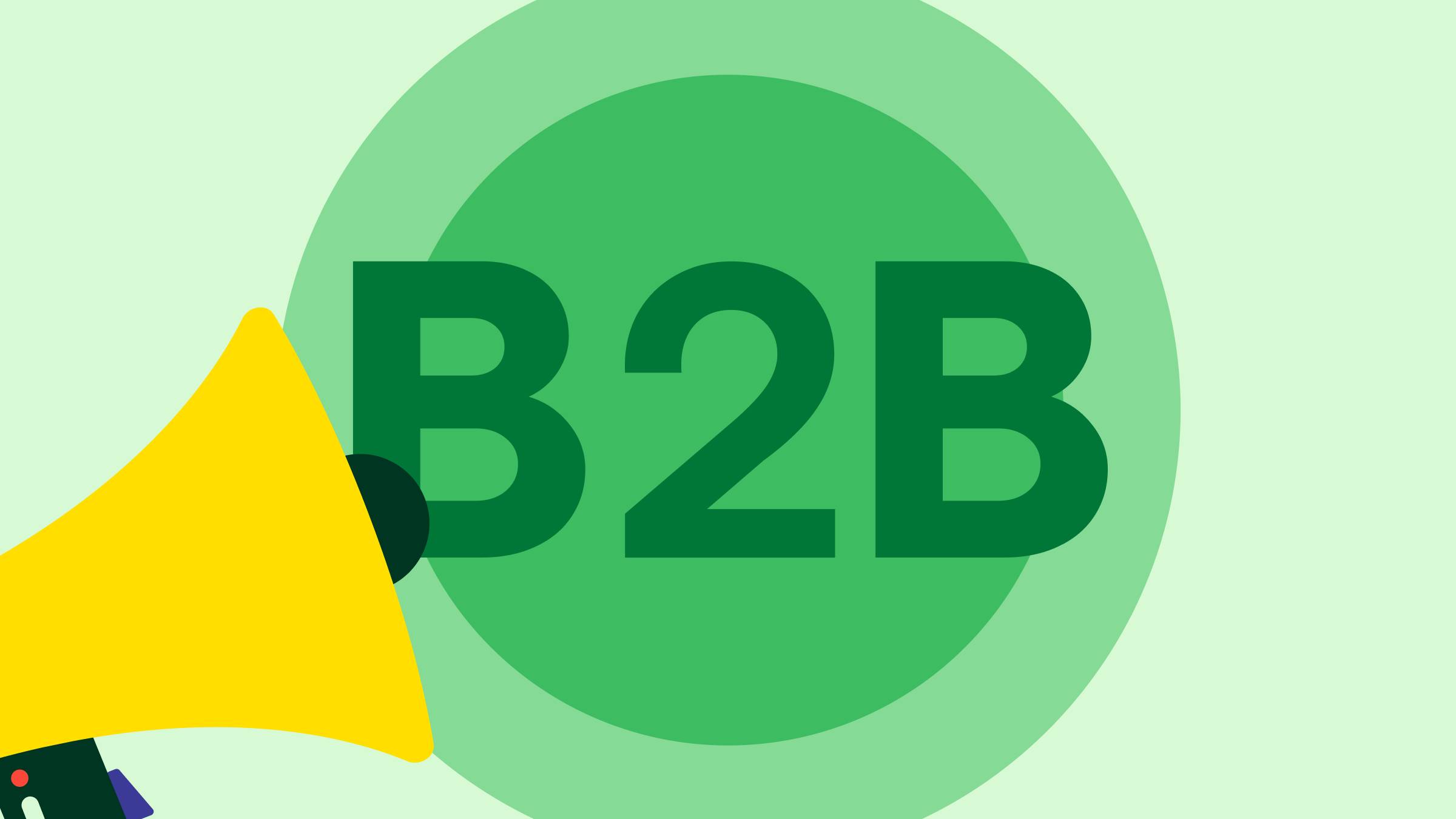Effective marketing attracts your ideal customers, builds trust and drives growth. Yet, many SMBs struggle to get it right. Without a clear strategy, it’s easy to waste time and budget on campaigns that fall flat.
In this article, you’ll learn the essentials of building a strong digital marketing strategy as an SMB. You’ll also discover practical tips, tools and advice for creating successful marketing campaigns.
What is marketing?
Marketing is the process of attracting customers to your company to generate revenue. It’s about getting to know your audience and showing them how your product or service can help them.
Take a small e-commerce business, for instance. The company’s marketing professionals might combine billboard ads, social media campaigns and paid online ads to build its brand and reach its ideal customers.
When done well, marketing tactics create a consistent, memorable presence across different channels. The marketing process builds trust and nurtures customers through the customer journey, leading to more sales and stronger brand loyalty.
Here’s how this might work for the e-commerce business in our example:
The billboards spark awareness, getting the SMB’s name and messaging in front of a broad audience
Engaging social media posts (like behind-the-scenes videos or customer testimonials) build familiarity and trust
Paid online ads target those already interested, offering special promotions or helpful content to guide them further along the buying journey
By consistently showing up across different touchpoints and providing value at each stage, the business makes it easier for potential customers to move from curiosity to purchase.
Why is marketing essential for SMBs?
Effective marketing drives growth for small- to medium-sized businesses that want to scale. Marketing helps companies attract and retain customers, differentiate their brand and make informed decisions that support long-term success.
Here’s how marketing supports SMB development:
Drives growth. Effective marketing generates high-quality leads, builds brand awareness and nurtures customer relationships – all essential for long-term growth.
Builds trust and credibility. Consistent, value-driven marketing positions your business as reliable and professional, boosting customer trust and encouraging potential customers to buy from you.
Maximizes your return on investment (ROI). For companies with limited sales budgets and resources, strategic marketing ensures that every dollar spent reaches the right audience.
Differentiates your brand. Marketing helps your business stand out in crowded markets, allowing you to compete against larger and more established companies.
Informs business decisions. Marketing metrics (like website traffic and engagement) give you valuable insights into what your audience wants, which messages resonate and where your brand can improve. These insights help you better align your products or services with customer needs.
With the right tools and strategies, marketing teams can help SMBs grow and stay flexible in a changing market.
Download Your Sales and Marketing Strategy Guide
5 tips for creating an effective digital marketing strategy as an SMB
A digital marketing strategy outlines how you plan to use online channels and tactics to reach and engage your target market. The right marketing tactics maximize reach, drive sales and build lasting customer relationships with limited resources.
Here are five expert tips on how to create an effective digital marketing strategy:
1. Use a ready-made marketing strategy template
Starting from scratch can feel overwhelming for SMBs with limited time and resources. A template provides a structured framework, saving time and ensuring they cover all critical elements of a successful strategy.
An ideal marketing strategy template should have the following features and information:
Customizations. Ensure the template allows you to adjust it to your unique business needs and goals.
Key areas of a marketing strategy. Ensure the template addresses essential elements of a marketing strategy, such as the target audience, goals, tactics and budget.
Clear structure. Find a template with a logical, easy-to-follow layout that helps you organize your thoughts and marketing plans.
Measurable goals. Look for templates that include sections to track key performance indicators (KPIs) so you can measure success.
Actionable steps. Choose a template that outlines concrete actions and timelines to keep you on track.
You can find free templates tailored for small businesses with tools like Canva or Notion.
Pipedrive’s customizable Sales and Marketing Strategy Template is also a valuable resource for businesses looking for a comprehensive approach. The template aligns sales and marketing efforts, helping SMBs create a unified strategy with realistic and measurable goals.
2. Understand the marketing mix
The marketing mix (also known as the four Ps of marketing – product, price, place and promotion) is a framework that helps businesses align their marketing efforts with customer needs.
Using the four Ps ensures that your digital marketing strategy is based on a solid understanding of the following:
What you’re offering
How you’re pricing it
Where you’re meeting your customers
How you’re reaching them
Imagine you run a SaaS company that offers project management software. By applying the marketing mix, you ensure your digital strategy aligns with your product’s value, meets customer needs and effectively reaches your target audience.
Whether refining the pricing model, choosing the right distribution channels or optimizing the user experience, the marketing mix helps create a balanced approach that drives customer engagement.
Here’s a breakdown of how to use the marketing mix:
Product | Define your product or service. What problems does it solve for your customers? What makes it unique? Example: Say you run a local bakery. Your new product is fresh, homemade pastries that cater to customers who appreciate high-quality ingredients and traditional baking methods. |
Price | Decide on a price point that reflects the value of your product while considering what your target audience is willing to pay. Example: Your pastries are premium, so your product’s price is slightly higher than competitors’, emphasizing the quality of the ingredients and the care that goes into each batch. |
Place | Think about where your customers are and how they’ll buy from you. Is it an online store, a physical shop or both? Example: You sell your pastries at your local storefront and online, with delivery options for customers who can’t visit in person. |
Promotion | Choose the marketing tactics that help you communicate your product’s value to your target audience. Example: You promote your pastries through social media ads showcasing their freshness and craftsmanship, offer discounts for first-time buyers and run a loyalty program for returning customers. |
By leveraging the marketing mix, you can build a strategy that attracts the right customers and effectively promotes your business.
3. Learn about the different types of digital marketing
Understanding the different types of digital marketing helps SMBs effectively reach and engage their target audience. By selecting the right approach, you can maximize your marketing efforts and achieve better results.
For example, if you aim to build long-term customer relationships, email marketing and content marketing might be ideal for nurturing leads over time. If your goal is to drive immediate sales, paid search ads or social media ads could provide faster results.
By understanding these options, you can better tailor your marketing efforts for the best outcomes.
Here are some of the most common types of digital marketing:
Search engine optimization (SEO) | Improving your website’s visibility on search engines like Google. Search engine marketing drives organic traffic over time by optimizing content and keywords. Use when: You want long-term growth and sustainable traffic without paying for ads. |
Pay-per-click (PPC) | Engaging a paid advertising model where you bid on keywords and your ads appear on search engines or social media platforms. You only pay when someone clicks on your ad. Use when: You need quick, targeted traffic and are ready to invest in paid campaigns for immediate results. |
Content marketing | Using blogs, videos and how-to guides to provide value and educate your audience. Different types of content can be used at various stages of the buying journey to nurture leads and encourage conversions. Use when: You want to build trust with your audience, improve SEO and create long-term engagement with inbound marketing. |
Email marketing | Sending targeted and personalized emails, often as part of a larger campaign, to nurture leads and drive conversions. These emails allow you to deliver timely, relevant content that aligns with customer needs and interests. Use when: You have an existing customer base and want to nurture relationships or drive repeat business. |
Social media marketing | Creating and sharing content on platforms like Instagram, LinkedIn or TikTok to engage with your audience. Use when: You want to build a community, increase engagement and establish an online presence. |
Affiliate and influencer marketing | Using the reach of other people to promote your company’s product to their audience, typically through partnerships. Use when: You want to quickly reach and build trust with a new customer base. |
Each method offers unique benefits depending on your audience, budget and goals. Knowing what you want to achieve from your marketing efforts will help you determine which marketing activities are right for your business.
4. Understand your ideal audience and how to reach them
Targeting the right people ensures you spend your marketing budget on consumers more likely to engage, convert and become loyal customers. This approach helps SMBs maximize their impact – even with a smaller budget.
For example, instead of running broad ads that reach thousands of uninterested viewers, a business could focus on a specific customer segment, like small business owners or tech startups.
Targeting this segment results in higher engagement and better returns with a much smaller spend.
Here are some practical ways to learn more about your ideal audience:
Create an ideal customer profile (ICP). An ICP helps you outline the characteristics of your perfect customer, such as demographics, job roles, industry and pain points.
Find the channels they use. Research which channels your audience uses the most. Are they active on social media? Do they respond to email campaigns? Do they search for solutions via Google? Identifying these touchpoints helps you choose the right platforms to engage with them.
Understand the buying journey. Know what motivates your audience at each stage of the buying journey (awareness, consideration and decision) so you can tailor your messaging accordingly.
By deeply understanding your audience, you can create more targeted marketing campaigns that speak directly to their needs and interests.
Download our customer journey map template
5. Implement the right tools and systems
Digital marketing tools help SMBs run campaigns efficiently and scale operations without needing a large team. Tools that automate, track and optimize campaigns enable you to focus more on growth and less on manual work.
Consider an email marketing tool as an example. The software allows you to schedule and personalize email campaigns at scale, helping you nurture leads and stay top of mind without sending every message manually.
Here are some common types of marketing tools:
CRMs. A sales CRM like Pipedrive helps you manage leads, track customer interactions and organize your sales and marketing efforts in one place. The software helps SMBs stay on top of every deal and campaign without losing track.
Email marketing software. Platforms like Mailchimp help you create and automate email campaigns to nurture leads and engage existing customers.
SEO systems. Tools like SEMrush help you optimize your website and content to rank higher in search results and drive organic traffic.
Social media management platforms. Software like Hootsuite schedules posts, monitors engagement and manages multiple social accounts from one dashboard.
Analytics tools. Google Analytics and similar platforms provide insight into website traffic, customer behavior and campaign performance so you can make smarter marketing decisions.
Choosing the right mix of tools streamlines your marketing efforts, giving you better visibility into how to drive consistent, sustainable growth.
How to use Pipedrive to enhance your digital marketing
SMBs need tools that make marketing simpler, more targeted and more effective without adding complexity. Pipedrive’s simple CRM helps SMBs centralize lead management, personalize outreach, track marketing performance and help you convert more leads with fewer resources.
Here’s how Pipedrive can support your SMB marketing efforts:
Centralize all lead and customer data
Pipedrive’s customer data management features save all customer data and interactions in the platform. This centralization aligns the sales and marketing departments, reducing the chances of losing important information and making creating personalized, timely campaigns easier.
Important information can easily slip through the cracks when customer data is scattered across spreadsheets and emails.
Here’s a look at how to visualize customer data in Pipedrive:

Segment your audience for targeted campaigns
With Pipedrive’s filters and custom fields, you can easily group contacts by behavior, acquisition source, location or lifecycle stage. These customizations allow SMBs to easily create targeted email campaigns, enhancing personalization and improving the customer experience.
Generic, one-size-fits-all marketing wastes time and fails to appeal to customers who want personalized experiences. Statista found that 64% of consumers prefer to buy from companies that tailor their experiences to their wants and needs.
Track marketing campaign performance in your pipeline
Pipedrive connects leads to specific marketing campaigns or channels, giving you a clear view of which efforts drive conversions.
Here’s an example of the email campaign data you can analyze in Pipedrive:

Investing in marketing without knowing what’s working can be frustrating. With Pipedrive, SMBs can quickly identify their most effective marketing strategies, double down on what’s working and cut spending on underperforming channels.
Automate email follow-ups and nurture sequences
With Pipedrive’s automations, you can automatically trigger follow-up emails when leads take specific actions (like filling out a form or downloading content).
Here’s an example of the types of automations you can create in Pipedrive:

Manually following up with every lead drains time and leads to missed opportunities. These automations save time, helping SMBs engage prospects without manually managing every touchpoint.
Integrate with your favorite marketing tools
Pipedrive connects easily with platforms like Google Ads, Facebook Lead Ads and Zapier, allowing you to automatically sync lead data and keep your marketing systems working together.
Here’s an overview of the popular Pipedrive workflows to use when integrating Facebook Lead Ads (via Zapier):

Disconnected marketing tools can create lead management gaps and slow down workflows. These integrations allow SMBs to maintain a seamless customer experience across channels.
Score and prioritize your best leads
Pipedrive’s lead scoring CRM identifies which leads will likely convert based on custom criteria, such as deal size or source channel.
Take a look at the image below to see how lead scoring appears in Pipedrive:

Wasting time on cold or unqualified leads can drain your team’s energy and budget. Qualifying leads this way allows SMBs to focus their marketing and sales efforts on the highest potential opportunities, increasing ROI without spreading resources too thin.
Visualize the customer journey
Easily map and track each stage of the customer journey with Pipedrive’s pipeline view, from the first interaction to closing the deal.
Here’s an overview of how to use the pipeline view:
For SMBs, this visual clarity prevents bottlenecks, allows sales reps to optimize touchpoints and creates a smoother marketing experience that moves leads toward conversion.
It’s challenging to spot bottlenecks or improve conversion rates without a clear view of the customer journey.
Final thoughts
Effective marketing helps SMBs connect with their audience, build trust, drive growth and make informed decisions. By using a strong strategy, understanding the marketing mix and leveraging the right tools, SMBs can create impactful campaigns that deliver real results.
Connecting marketing and CRM data helps you create targeted, personalized campaigns based on customer behavior.
Pipedrive brings your marketing and sales data together in one place, making it easy to segment audiences, track campaign performance and guide your ideal customers through the sales funnel.
Sign up for a free trial today to run smarter, more efficient marketing campaigns.









